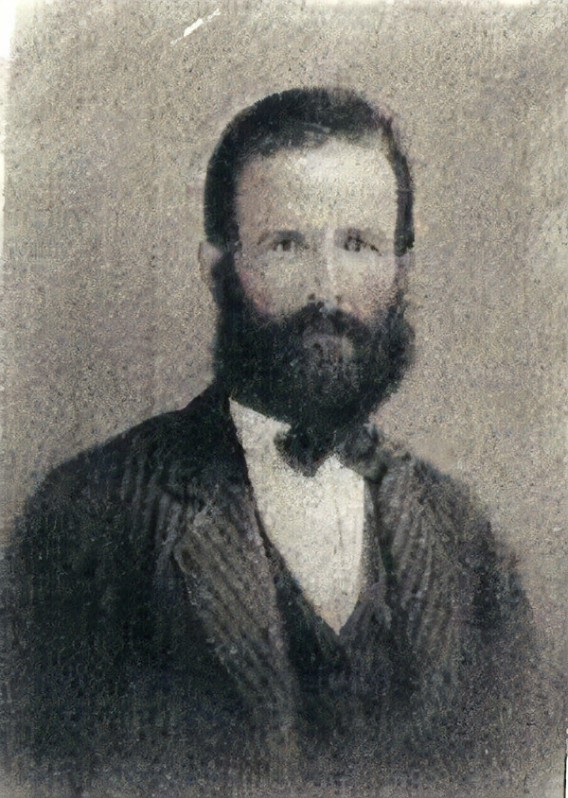Disclaimer
Here at Kentucky Tennessee Living, we strive to keep this site nonpolitical in nature. All historic events posted are those that changed the lives of future generations and have helped to give miners a voice in their working and living conditions. As well as we remember those who fought on both sides of the Civil War. All events posted are for the benefit of remembering who we are as the American Appalachian people.
The Civil War
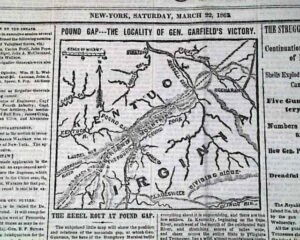
Between the years of April 12, 1861, and May 9, 1865, America tore herself apart with the Civil War between the states. The peace of the Appalachian Mountains was broken as brother took up arms against his brother. Several battles were won and lost the area of Letcher County and we will try to cover as many of them as possible.
Several of the Generals and other significant military men who went on later to hold major positions in US politics after the War.
Who was Captain Benjamin Everage Caudill
Born at Sandlick, Kentucky on January 11, 1830, Benjamin was the son to John A. and Rachel Cornett Caudill. He married Martha L. Asbury of Tazewell, Virginia on February of 1848.
The 5th Kentucky Infantry Regiment

It was organized on October 21, 1861 under the command of Colonel John S. Williams in Hagar Hill at Prestonsburg, Kentucky. The fifth Kentucky Infantry would later be under the command of Brigadier General Humphrey Marshall.
This was a regiment that served under the Confederate States Army and in 1863 would become the First Kentucky Brigade under the command of Brigadier General William Preston and be moved to Knoxville, Tennessee. The regiment would once again change hands to Lieutenant General Simon B. Buckner’s Army of Tennessee.
Formation of Caudill’s Army

During the Civil War, on October 22, 1861, Caudill organized and commanded “Caudill’s Army” which became Company F of the 5th Kentucky Infantry and then later the 13th Kentucky Mounted Calvary. These were the men from Letcher County, Kentucky. They would be nicknamed the “Yahoos”. They disbanded at Hazel Green, Kentucky, on October 20, 1862 under the orders of Brigadier General Humphrey Marshall. The men were given a choice of honorable discharge, reenlist in a new regiment, or transfer to a cavalry regiment.
The 10th Kentucky Mounted Rifles
In November 1862, Colonel Caudill would once again muster his men to join the 10th Kentucky Mounted Rifles. Caudill’s Army would always be a formation of the Army of Tennessee. There would be times that this army would be under the command of General John Hunt Morgan.
The Battle of Leatherwood, Kentucky
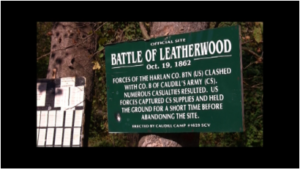
On October 19, 1862, Captain David J. Caudill and his men from Company B of the 10th Mounted Rifles were guarding a salt works in Leatherwood, Kentucky. The production of salt was very important to the economy of the area at that time.
Captain George Morgan and Lieutenant Clabe Jones with their Harlan County Battalion came toward Leatherwood to attack the guarding Confederates. They took their positions across a creek from the guards and opened fire.
Shots were fired and several of the men from the 10th Mounted Rifles were wounded. A battle ensued and lasted several minutes. The 10th Mounted Rifles quickly retreated to Whitesburg, Kentucky because they had lost their position.
Capture
During the Battle at Salt Works near Gladesville, Virginia, on July 7, 1863, Colonel Caudill and most of his men were captured. He was considered one of the “Immortal 600” as he a prisoner exchange on August 3, 1864. He returned to his command on September 17, 1864.
The Battle of Marion, Virginia
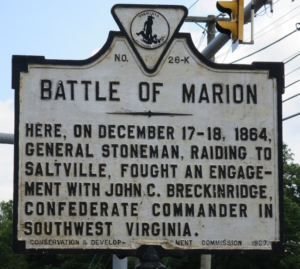
December 17th through the 18th of 1864 Major General George Stoneman who was in command of the Union Army in Kentucky and Tennessee raided Southwestern Virginia. The goal was to destroy all facilities and supplies that the Confederate Army had use of.
Major General John C. Breckinridge was the commander of the Department of Southwest Virginia. He called into action the 10th Kentucky Mounted Rifles, “Caudill’s Army”, as the front regiment against the forces of Major General Stoneman.
The two sides met in Marion, Virginia. After several days of fighting the Confederates took inventory of the men and ammunition that they had left and found that they had heavy losses with very few bullets left. They did not have time to resupply. Even though the men felt that they could hold the position another day, Breckinridge called for a retreat and ordered Caudill to lead the way.
The 13th Kentucky Cavalry
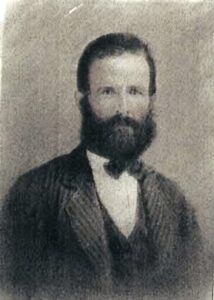
In March of 1865 the 10th Kentucky Mounted Rifles would reorganize and be renamed to the 13th Kentucky Cavalry. They would disband on April 12, 1865, in Christianburg, Virginia. However they would surrender on April 30, 1865 at Mount Sterling, Kentucky.
Death of Caudill
At the age of 59, Caudill had a severe cold, pleurisy, and exhaustion. He would die on February 11, 1889, while on a trip to Tennessee to organize a church.
Thank You
We thank you for continuing to support Kentucky Tennessee Living. As we bring to you the history of the Appalachian Mountains.
Sources
5th Kentucky Infantry Regiment (Confederate)
https://en.wikipedia.org/wiki/5th_Kentucky_Infantry_Regiment_(Confederate
5th Kentucky Infantry
https://military-history.fandom.com/wiki/5th_Kentucky_Infantry
The markers at the Civil War Memorial site at the Pound Gap site.
Kentucky Civil War Confederate Units 1st through 14th
https://www.familysearch.org/en/wiki/Kentucky_Civil_War_Confederate_Units_1st_through_14th
Caudill’s Army
https://www.hmdb.org/m.asp?m=90803
Caudill’s Army
https://military-history.fandom.com/wiki/Caudill%27s_Army
Caudill’s Army
https://en.wikipedia.org/wiki/Caudill%27s_Army
Kentucky Volunteers, Confederate States Army
https://yeahpot.com/military/13thcsaroster.html
The Caudill Family
The Mountain Eagle
Thursday, May 28, 1931
http://usgenwebsites.org/KYLetcher/articles/caudill_family.htm
Military History Online
https://www.militaryhistoryonline.com/Genealogy/Regiment/Kentucky/4/588
Battle of Leatherwood History
http://www.battleofleatherwood.com/history.html
Battle of Marion
https://simple.wikipedia.org/wiki/Battle_of_Marion
Copyright and Other Information
All photos are in the public domain unless otherwise noted. This includes photos dated before 1923. All other photos are used with permission or under the education fair use statute of the US copyright law.
Copyright 2022 Kentucky Tennessee Living
Social Media Pages
For more about us, you can visit our Facebook page:
https://www.facebook.com/kytnliving
Our Twitter page:
https://www.twitter.com/KYTNLiving
Our YouTube Channel:
https://www.youtube.com/kytnliving
When we forget our past and who we are as a people, then we become who “they” say we are. ~~ David Sergent
I have attended the University of Kentucky. I have an Associates Degree from Hazard Community College and Technical School. I have also attended the University of Pikeville. I have taken several classes in Journalism as well as in the Appalachian History, Literature, and Sociology during my time at those schools.
I was born in Florida and grew up in Burdine, Kentucky. I have been married to David W. Sergent since May 4, 2013. I have two children and four grandchildren from a previous marriage. I currently live in Tennessee but my hope is to one day come back home to live in the beautiful mountains once more.


